Pollinators aren’t just pretty things fluttering around our gardens and buzzing past as we hike on trails, they are critical to the health and survival of ecosystems throughout the world. Bees of a variety of species pollinate the plants that supply a large percentage of the world’s food supply and about 1,000 plants used by humans for food and other supplies are pollinated by bees and other pollinating animals. Additionally, 90% of wild plants are pollinated by wild bees of many species. Bats and birds contribute greatly to the pollination of wild plants and agricultural crops, while butterflies and moths pollinate flowering native plants in every ecosystem.
Habitat loss, over-reliance and misuse of pesticides and herbicides, invasive species, as well as disease and parasite infections are leading causes of the startling decline of all pollinator animals worldwide.
In the United States, over 40% of honeybee hives were lost last year.
Though wild bees haven’t been studied to the extent that honeybees have, nor do they suffer from the disease/parasite issues common to the honeybee, we know they are declining.
The beloved North American Monarch butterfly has declined by 90% in the past 20 years. The process to list the Monarch as an endangered species has started, with plans formulating for the expansion of its migration habitat, though unfortunately, no limits were placed on the use of the herbicide Roundup, which is the primary culprit in the decimated Monarch populations.
I could go on (and on) lamenting the problems that wildlife, and nature in general, are experiencing, but what the average gardener, homeowner, and citizen should know is that nothing in this world exists without balance. In all parts of the world, preservation of wild space is vital to all life.
Fortunately, understanding about the threats posed to pollinators is beginning to find way into the mainstream consciousness of people and their governments and perhaps it’s not too late to prevent a catastrophic decline in the pollinator partners whose work is requisite for human existence.
Pollinators should be appreciated for their contribution to a healthy and vibrant ecosystem, their role in plant preservation and evolution, and their beauty.
They deserve to exist.
As I was thinking about Pollinator Week and what I wanted to say, this lovely, simple, but profound post from Forest Garden popped up in my email.
I can’t add anything to this, in either text or visuals.
What to do?
Well, there are the usual things: walk, bike, carpool and take public transportation when you can–make that a lifestyle change to lessen your carbon impact. Recycle and reuse when possible–there’s enough junk in the world. Avoid the use of home chemicals and support companies/products that are cognizant of the dire consequences resulting from unfettered and irresponsible industrialization. Through volunteerism and/or donations, support the many organizations that are educating and lobbying for those who cannot speak for themselves.
Vote for public servants who are friendly to the idea that our society must set aside more public space for pollinators–and other wildlife. Whether it’s supporting the dedication of a swath of land bordering I-35 from Minnesota south to Mexico thus enabling the Monarchs to continue their remarkable migration, or setting aside more land as green space in cities and towns, or recovering and protecting natural habitats–of all sorts–support leaders who promote these endeavors with your time, money, and votes.
Also, if you own or rent a single family home, commit to removing that stretch of boring, wasteful, high-maintenance lawn and instead, prepare and install a wildlife friendly garden or pollinator garden. You won’t be sorry you did.
The American love affair of the lawn is baffling to me. Most people don’t even do anything with their lawn, except to walk on it when they mow. The traditional expanse of lawn feeds almost nothing, except for some grubs and other problematic insects. The lawn requires much watering, fertilizing and mowing and that is unsustainable. I guess one positive aspect to lawns is that the maintenance employs people.
To paraphrase: Love the mower, hate the mowing.
A more efficient, environmentally appropriate, and attractive use of outdoor space is to plant for pollinators and other wildlife. Nature isn’t over there, but indeed, should be welcomed and nurtured in your own backyard–and front yard. Additionally, a well-planned, established pollinator garden is not only more beautiful than a lawn, but also less work in the long run.
A wildlife or pollinator garden requires some planning and thought and like a good paint job, preparation is key. Dig out the existing grass and/or solarize, so that you begin your soon-to-be-stunning garden with a blank slate. If you have poor soil, some soil amendments are recommended; home-grown compost is probably the best thing you can add to a garden. If you’re gardening on thin soil with rock, you might build raised beds, either with rock, wood, or steel edging.
Some general design elements are practical to remember: addition of trees, large and small, are important, and larger plants are best placed toward the back, medium and smaller plants, toward the front of a garden.
Planting for blooms throughout the year means choosing a variety of different plants. Mix reseeding annuals with perennials, if you like. Many plants can be purchased in four-inch pots and as seeds and that lessens the cost of a yard transformation. Share plants with friends and neighbors. If possible, choose plants that are native to your region. Native plants require less water and effort because they belong where you live and will attract the wild bees and other pollinators that you’re aiming to support. There is a direct link between native plants and their pollinators. Locally owned nurseries are usually at the front line of providing invaluable information for what to plant for your particular area. Also, check out the “Resources” tab on this blog to link to organizations such as the Lady Bird Johnson Wildflower Center and Wildseed Farms. Beloved plants such as roses, daylilies and the like can certainly be in the palette of the well-designed pollinator garden, so you don’t have to give up the plant that your grandparents grew and that you would love to add to your garden.
Finally, start small. You don’t have convert the entire landscape THIS YEAR. Add a bit of garden each year and before you know it, your space with be a living garden–full of life, color, pollinators, and all manner of beauty. Your outdoor space will be more enjoyable and less onerous to maintain than the grass that you removed.
If you live in an apartment, townhouse or condominium, encourage the owners and /or managers to do all of the above instead of having the mowing crew show up, once-per-week, spewing hydrocarbons and noise.
Most of us are granted only a small part in helping to heal the world. But if many step up, speak up, and change the “yard” maintenance paradigm from wasteful lawn to wildlife/pollinator habitat and garden, what a difference that could make.
Start small.
Spread the word.
Change the world, one garden at a time.




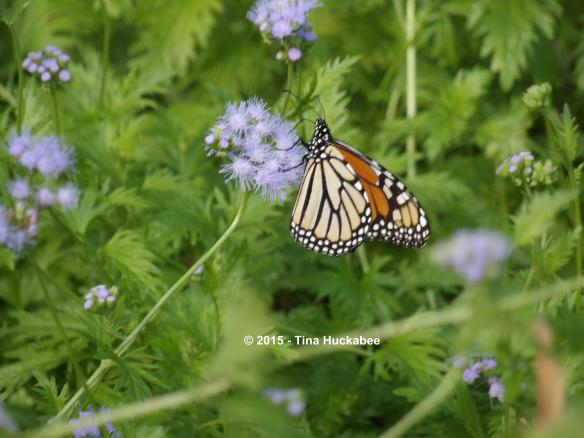










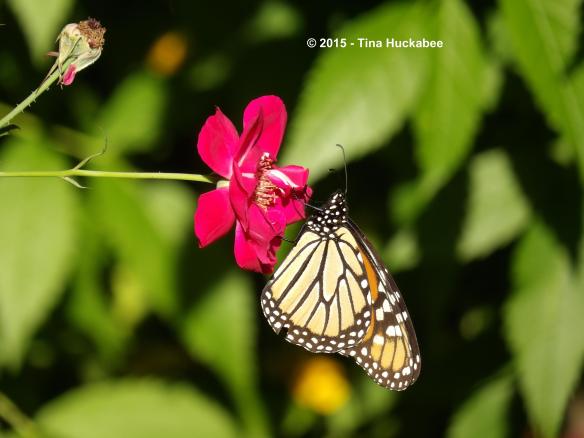

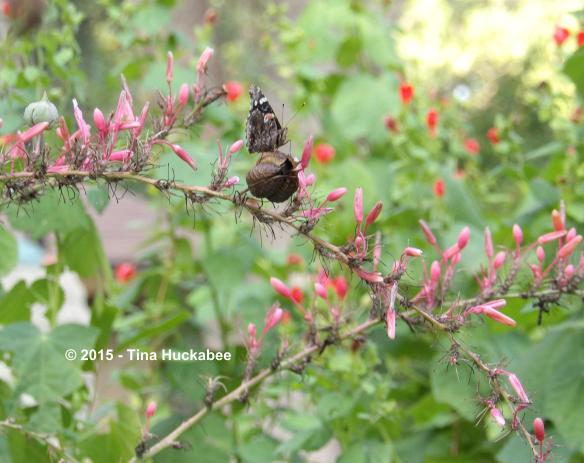

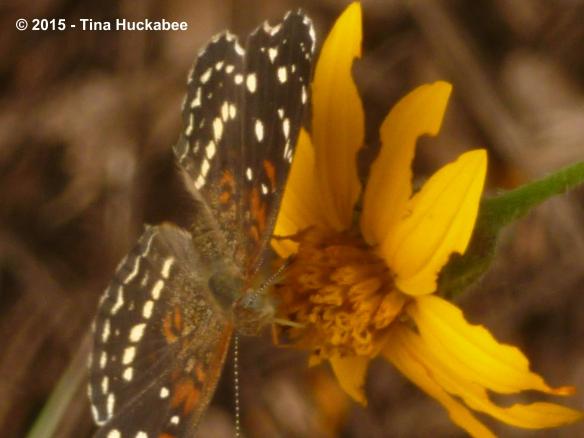
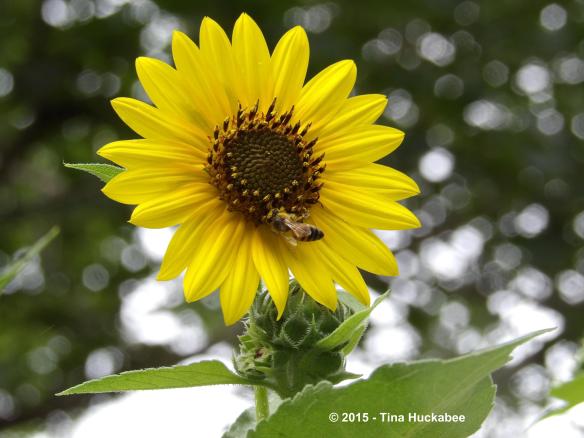
Reblogged this on Forest Garden and commented:
Bee Keeper and gardener Tina Huckabee, who gardens in Austin, Texas, speaks poignantly about the importance of pollinators to our ecosystems, our food supply, and our very survival. I learned a great deal from reading Tina’s essay, which is beautifully illustrated with photos from her garden. Tina is a passionate advocate for preservation, and a practical one. Please enjoy her post today! Woodland Gnome
LikeLiked by 1 person
Well, thank you Ms. Gnome! Having read your blog, I believe we’re on the same tract of thought and more importantly, action. As corny as it sounds, the act of adding a wildlife/pollinator garden would lessen the trashing of the Earth. It’s time for a radical change in the aesthetics of what constitutes “beauty” in the home and business landscape. Yes, it’s about water-wise plants, but it’s also about what the landscape can feed, as well as a divorce from reliance of chemicals and monoculture gardening. Let the revolution begin!!
LikeLiked by 1 person
Beautifully expressed, Tina 😉 I’m interested in knowing more about how you have gotten your garden certified as a wildlife habitat. I’ve looked a little at the NWF information on certification, and am planning to begin work on that process for our garden. We came home from errands this morning to find goldfinches happily playing in our original butterfly garden. That bit of beauty makes all of the planning and effort worthwhile 😉 ❤ ❤ ❤
LikeLiked by 1 person
Oh, it’s super-easy to certify. If I was cynical, I’d view the process as a fundraiser. 🙂 Check out the National Wildlife Federation at this link: http://www.nwf.org/Home/How-to-Help/Garden-for-Wildlife.aspx
Trust me when I say that you’re already doing what’s recommended. Just send in the $15. My view is that it (the donation/certification) promotes wildlife gardening and that’s never a bad thing and the NWF is a good organization. I haven’t ever opted for the physical sign placed out in my front garden, but I have the widget on my blog, which reaches many more people.
LikeLike
Pingback: Feed Them, But Will They Come? | Forest Garden
Great post Tina. We are nearing the end of a two year experimental ban in neonics in the UK, this will be a crucial time now. Hopefully the ban will be extended. I read too this morning that there is evidence Fungicides are also to blame and they are widely used in nurseries and plant centres, seed coatings and of course in farming. Thank you for the link to the Forest Garden too. I notice on my daily dog walk the farmer has not sprayed the paths this year, areas of conservation zone have been set up. We have to be positive and make a difference.
LikeLike
Thanks, Julie. Good for the UK and the EU in general–you guys are ahead of us. (Well, in so many ways….)
Isn’t Forest Garden lovely?
And good for your farmer–many there be many, many more!
LikeLike
There is a ban in Canada are neonics still authorised for use domestically and by farmers in the US?
LikeLike
Yup! Our chemical manufacturers, along with our gas and oil industry, have powerful lobbying influence with our federal and state governments.
Money talks.
LikeLike
Wonderful post – very well said! We can all play our part whether we have a windowbox or a large garden and wherever we live in the world. Our pollinators are precious – we need to work in partnership with them to save our planet.
LikeLike
Yes we can! And we do need to be partners with the natural world–urban, suburban and rural–all of us can play a role, but we do need our governments to back initiatives.
LikeLiked by 1 person
Absolutely. We need to keep reminding them how important the natural world is to all of us.
LikeLiked by 1 person
Tina, what a beautiful and thought-provoking post. Nothing that you pointed out could have been said any better by anyone else! And thanks so much for the great links you provided. As you said, a yard doesn’t have to be changed in a year. Doing it bit by bit, plant by plant, is a fine way to do it. I think doing it in this manner gives a person the advantage of being able to do more research and learn more about the plants they’re using and how to care for them in an organic manner. For me, it’s been fun to see how my yard is constantly changing and provides challenges for me as I go on to my next “plot”!
LikeLike
Thanks! As well, those with children can impart such valuable lessons when they encourage being outdoors, teaching about the local wildlife and habitat, and so many other lessons.
I think it’s overwhelming to many people to think about a re-landscape. That’s why they hire companies. I always encourage small steps, a bit at a time.
I don’t know about “landscapers” in Wichita, but many of our companies in Austin are not very forward-thinking. There’s still an emphasis on lawn and now, gravel with a few cacti/agave. Not reflective our our natural habitat or the wildlife endemic to this area.
LikeLike
I had no idea about the monarchs….!! 😦
I am actually hoping that my next garden/property ends up being a blank slate, so to speak, because I want to go in an entirely different direction with it than I ever have before. One thing I am looking forward to is only having a very small area of lawn, and other is utilizing more tough native plants that can take what nature throws at them. Hopefully this will attract more beneficials as well.
LikeLike
You’re not alone–many people don’t realize how imperiled the Monarch is, as well as how serious the threats to pollinators in general.
I think you have a good point in that the blank slate certainly is easier to visualize when you’re wanting a specific look or set of plants. Having a smaller lawn and native plants will certainly make your gardening life easier and more rewarding.
LikeLike
I agree and have strived to make my garden wildlife friendly, Frances
LikeLike
I’m sure you have–may others follow your example!
LikeLiked by 1 person
Wonderfully well written, thoughtful and provocative, with clear steps laid out that anybody can take (and everybody should!). I am especially frustrated over the political aspects of this. Large industrial interests have been convinced that they will benefit enough short term from their current course of action that any potential downsides won’t matter. They aren’t necessarily cruel or stupid people, but the folks in control are being supplied information that is geared to make the hearer happy, and that generally results in poor/dangerous decision making.
I read an article on CCD recently that pointed out commercially kept bees in the US are not treated well, though their beekeepers do seem to care for them a great deal. The stresses of travel, feeding on monocultures for days at a time and the damages from pesticides and fungicides used on fields all combine to leave commercial bees (whose plight is compared to both migrant workers and livestock in the article) weakened and susceptible to varroa mites. The problems are being addressed by the commercial beekeepers – they can resupply, feed supplements and keep Euro honeybee numbers up now they know what to watch for – but the effects on the myriad native pollinators is impossible to gauge.
I am currently reading a work of fiction, “The Bees” by Laline Paull, a story that is told entirely from the point of view of a worker bee in a hive. It is fascinating and compelling reading, and has me actively grateful for every pollinator-friendly plant in my garden. We’ve become complacent as a society about chemical use as our go-to solution for every “problem” regarding insects and bugs, and there is a steep price to pay for our laziness. Now we’ve got work to do, some of it hard (as in expensive or uncomfortable or inconvenient) work, to try and put things back closer to the way they originally were.
LikeLike
Speaking of well written, thoughtful and provocative….
Yes, I would agree that the whole system is set up for short term benefit (for a relatively few), irrespective of the long time harms to a world that we all must share. The those in control are dazzled by the moneyed interests and it’s very hard to prevail against that kind of influence. You and I have a direct vote, but everything else must be accomplished by choosing products and companies who’ve shown a sense of concern for the future and that takes time. Obviously, if more choose to walk the same path as you and I have, and many other gardeners and naturalists as well, there is power in that kind of movement.
I think it’s very human to look at the “quick fix” and particularly so for Americans–we want a pill to fix a sickness or lose weight and we want a lawn because it seems easy or a can or pesticide/herbicide because it appears to be the simplest fix for an insect problem. We buy into stuff all the time. Isn’t that part of what Pope Francis said this past week and isn’t that causing problems for the Earth and therefore, all of us. There’s a lot of work that will need to be done, from changing the aesthetics of what is considered attractive in a garden to the amount of money used to buy political campaigns. I hope we have the will to stand up and be counted. As this last week has demonstrated, we haven’t yet done that with other issues which are also damaging our world.
I think the original theory about Colony Collapse Disorder was that the commercial honeybees were stressed because of the monoculture nectar/pollen gathering and constant moving around. It now seems clear that it’s the use of pesticides, but you’re correct that the commercial bees are stressed and who knows what damage is being done to native bees.
I’ve heard of that book, but not read it. (Reading “H is for Hawk” right now.) My neighbor has the “Bees” book; I may borrow it from her. Let me know how you like it.
LikeLike
Pingback: Our Pals The Pollinators | My Gardener Says… | WORLD ORGANIC NEWS
Excellent post. I do like to thing I’m making a small contribution with my yard, and dream of a time when wildlife friendly gardens are at least as common as lawns, creating habitat pathways that stretch across the country.
LikeLike
I couldn’t agree more. I love the idea of the Monarch migration path along the whole of I-35, but wouldn’t it be absolutely wonderful if there were pollinator and wildlife gardens every few feet or so? It’s not so outrageous, I think.
LikeLiked by 1 person
Tina this is wonderful….something we all can continue to do…and the best advice is start small….and just reducing lawn and stopping chemical use will help turn it around pretty quickly. I am redoing and starting small so it is manageable as I wade through the weeds, seedlings and lingering plants…..
LikeLike
Yes, I do think starting small is an advantage when a redesign and new landscape is the goal. I think many people tackle a huge area, only to find it hard to maintain initially. If the project is over a period of time and several (or many) seasons, one learns the plants and their requirements. Once converted from a high-maintenance/needy lawn, most of us don’t require chemicals in order to garden successfully.
I look forward to your posts about your garden progress.
LikeLike
Well said, Tina. I find it interesting that the Pope’s encyclical was published during pollinator week–even if it is a U.S. pollinator week and probably a coincidence. It’s the little things, isn’t it? The little things that are really very big and important things in disguise. But as John Muir said so many years ago (and the Pope echoes today): “When we try to pick out anything by itself, we find it hitched to everything else in the Universe.”
LikeLike
I imagine it was a coincidence–but a happy one indeed! I love the John Muir quote. I’m continually frustrated and baffled by the numbers of people who still don’t understand the connectedness of…well, everything. Argh!!
LikeLike
Such beautiful photos. Wow. And I agree with every word you said. And while some people might need reasons to justify showing our pollinators even a rudimentary kind of respect I think you really nailed it when you said, “They deserve to exist.” To me it is really that simple. One of my favourite garden writers, Evelyn Hadden, has been writing about this topic for about as long as you I think. Her website has some nice how-to tips: http://www.lesslawn.com/
LikeLike
I agree–it’s that simple–they deserve to exist and with what arrogance we continue to destroy our world. There are so many problems, so many things that I wish I could have a positive influence upon, but in the end, I can only do what I can, IN MY OWN BACKYARD! Oh, and front yard, too. All of us who live in a place with a plot of land, could lend our efforts to better our little plot of the Earth by using less water, chemicals, less mowing, and planting for wildlife. It’s not brain surgery.
I’m familiar with Evelyn Hadden and there are others too. It’s not just about “Xeriscape”, though that’s an excellent start. It’s about striving for a living garden with little or no negative impact on the environment.
LikeLiked by 1 person
Wonderful post… Information And how to help… Perfect
LikeLike